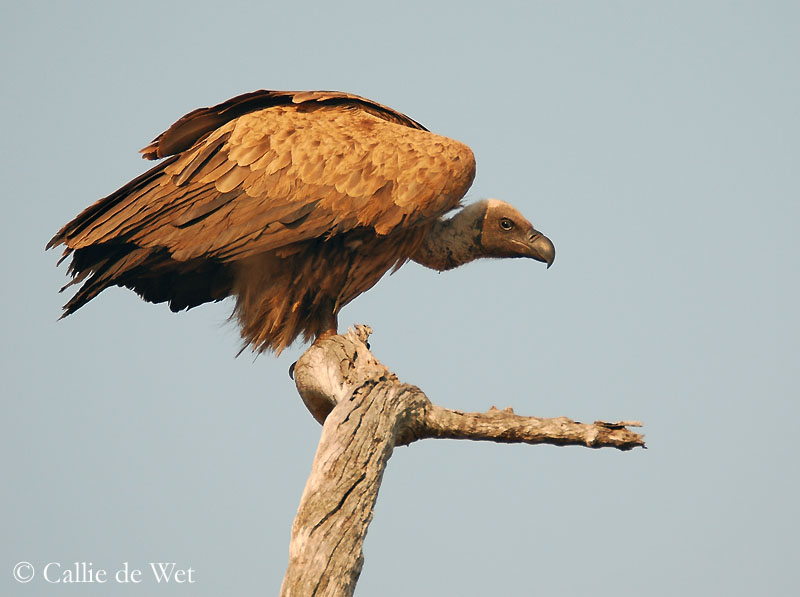
African White-backed Vulture
Gyps africanus
Accipitriforme Order – Accipitridae Family
BIOMETRICS:
Length: 89-98 cm; Wingspan: 210-220 cm; Weight: 4,2-7,2 kg
LONGEVITY: up to 19 years
PHYSICAL DESCRIPTION:
African White-backed Vulture is an Old Word Vulture. It is very typical with its bald head, broad wings and short tail. It has a white neck ruff. This vulture has whitish back and rump, making contrast with its dark plumage.
It has sparse yellowish down on its black bare skin on head and neck. It has some variable colours, brown on shoulders and joints of wings, primary flight feathers black, and secondaries mostly dark brown. Tail is black. Underparts are fulvous. Under wings are white, crop has brown patch.
Eyes are dark brown. Legs and feet are dark brown. Bill is strong and black at all ages.
Juvenile is very dark and brown, more than adults. But it has not pale white areas. It needs some years to reach adult plumage, from 4 to 6 years.

VOICE: SOUNDS BY XENO-CANTO
African White-backed Vulture utters a croaking when at nest or near carcasses. But it may make a squealing noise when disputes occur for food.
HABITAT:
African White-backed Vulture is common in wooded areas which support populations of large grazing mammals. It also can be found along streams.
RANGE:
African White-backed Vulture lives in Africa, South of Sahara, and in a large part of South Africa and Namibia, and equatorial forests of West Africa.
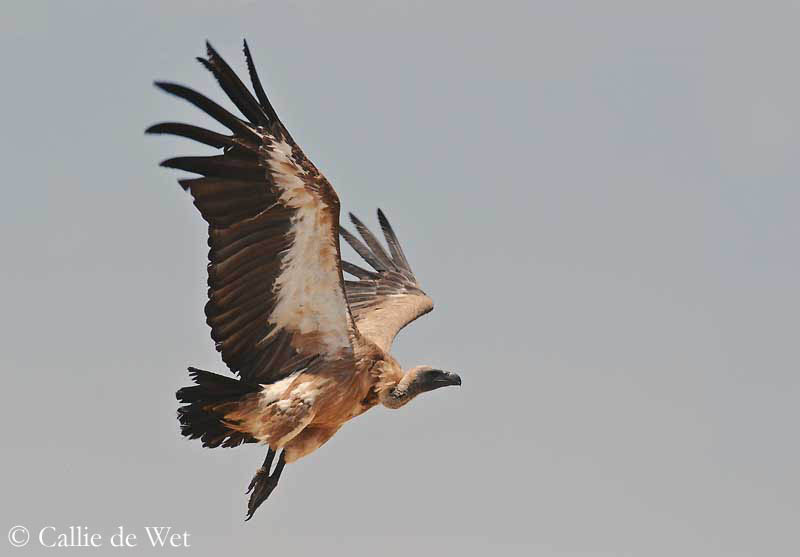
BEHAVIOUR:
African White-backed Vulture may be the most numerous of African vultures. It has gregarious feeding habits. It feeds mainly on carrion. We can find it in big numbers when food resources are abundant. These birds are adapted to feed on soft tissues, and cannot rip open large carcasses with thick skin.
African White-backed Vulture is a very gregarious bird, feeding in large flocks. Often, up to 100 of these birds can gather near a carcass.
It is very tame, venturing into towns, searching for food.
African White-backed Vulture searches its food by soaring high above the ground. It has keen eyesight. When one bird finds a freshly killed animal, it wheels in the sky to signal other vultures to come and eat.
It is the most-lightweight of the African vultures, and the most mobile and agile species.
It appears that this species has not courtship display.
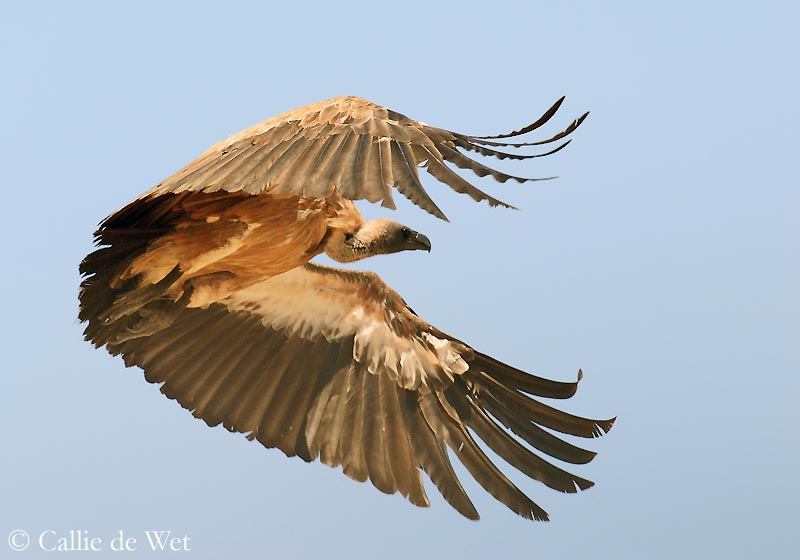
FLIGHT:
African White-backed Vulture shows its white back only in flight. It soars easily with its broad wings.
REPRODUCTION:
African White-backed Vulture makes its nest in trees, and breeds in loose colonies. Nest is small in size, for these large vultures. It is located at the top of a tall tree in their territory and often along streams. It is a platform made with sticks, and the interior is lined with grass and green leaves.
Female lays one single egg. Incubation lasts about 56 days, by both parents. Chicks are fed by both adults, and may fledge at about 4 months.
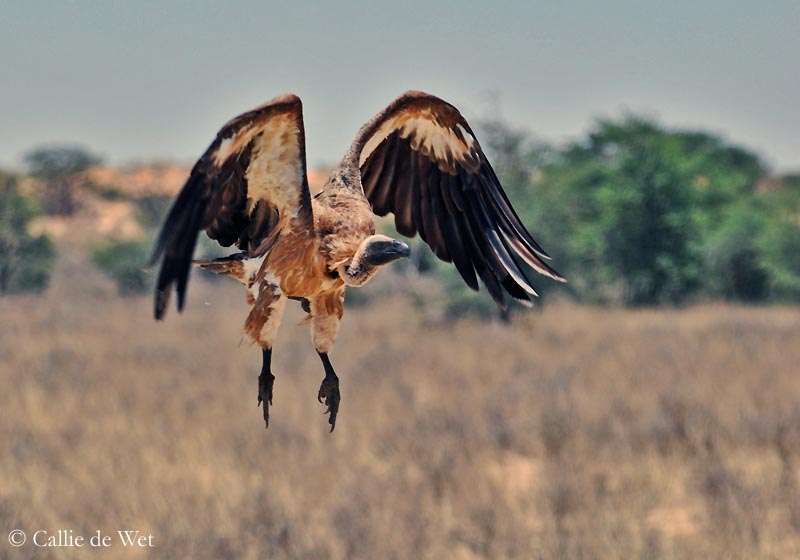
DIET:
African White-backed Vulture feeds mainly on carcasses and bone fragments. It is a strict meat-eater.
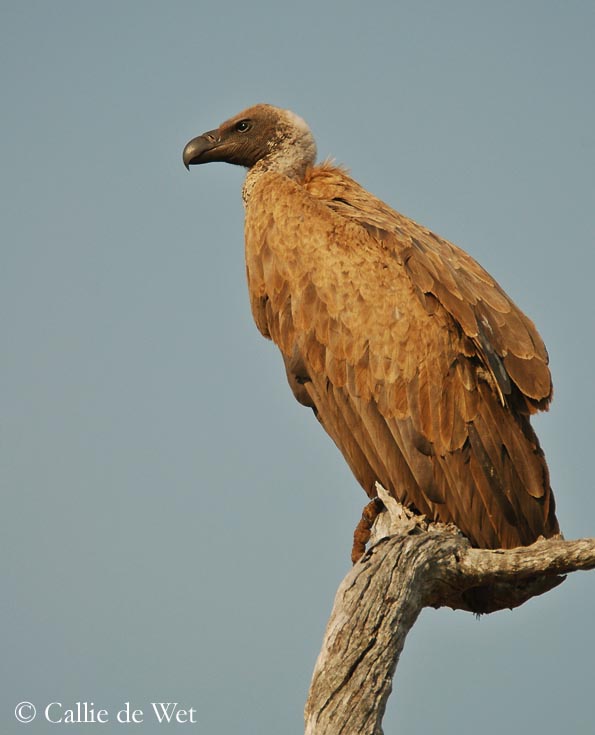
PROTECTION/THREATS/ STATUS:
African White-backed Vulture is relatively common in southern Africa. But it is considered as vulnerable, with their recent decline. African White-backed Vulture suffered some threats such as indirect poisoning, habitat loss, collisions and electrocution by power lines.
Fr: Vautour africain
All : Weißrückengeier
Esp : Buitre Dorsiblanco Africano
Ital : Grifone dorsobianco africano
Nd : Witruggier
Russe : Гриф белобокий африканский
Photographs by Callie de Wet
GALLERY
Text by Nicole Bouglouan
Sources:
HANDBOOK OF THE BIRDS OF THE WORLD Vol 2 by Josep del Hoyo-Andrew Elliot-Jordi Sargatal - Lynx Edicions - ISBN: 8487334156
BIRDS OF AFRICA SOUTH OF THE SAHARA by Ian Sinclair and Peter Ryan - Princeton University Press Princeton and Oxford - ISBN: 0691118159
Wikipedia (Wikipedia, The Free Encyclopedia)
The Hawk Conservancy Trust (Hilary Smith)
Other article: The Old World Vultures